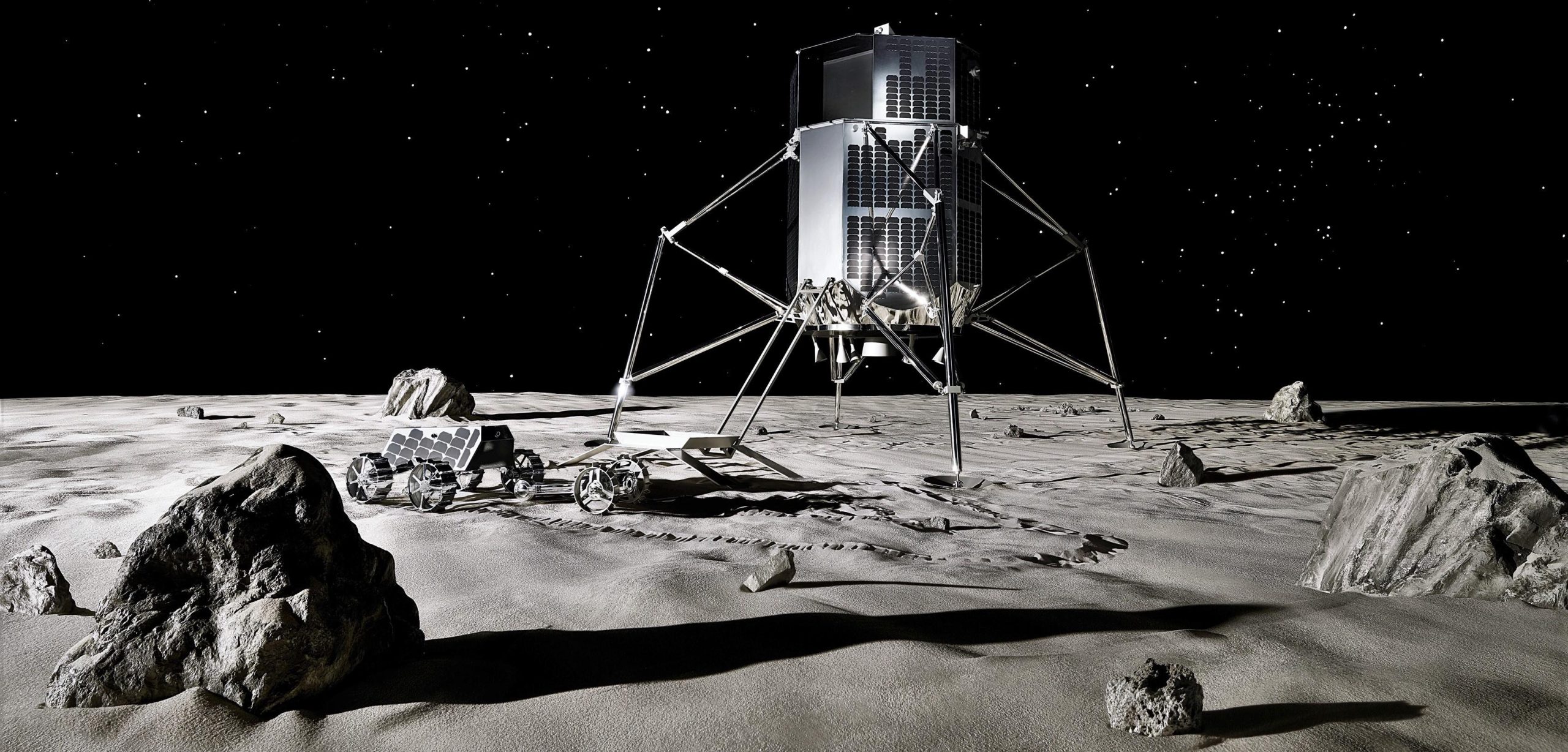
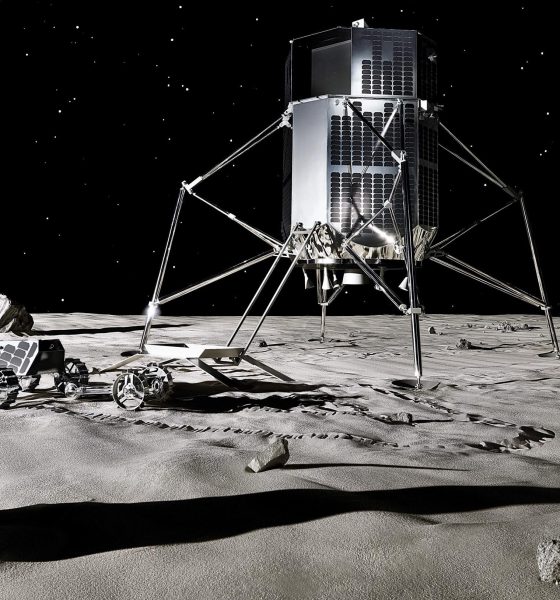
News
SpaceX customer iSpace updates Falcon 9-launched Moon lander, rover plans
Japanese commercial space company iSpace has provided an updated schedule for its first private missions to the Moon, both set to launch on Falcon 9 rockets and land on the Moon as early as 2021 and 2023.
iSpace’s goal is to understand and map lunar resources (particularly water ice) and eventually gather and process those materials into resources that could help enable far more ambitious lunar exploration, up to and including a partially self-sustaining lunar outpost capable of supporting astronauts. Known as Hakuto-R (“white rabbit” reboot), iSpace began as a team pursuing the Google Lunar XPRIZE before its cancelation in 2018 after several postponements pushed competing teams well past the prize deadline.
We also announced an updated mission schedule for the HAKUTO-R Program. We will perform a lunar landing in 2021 and a lunar landing and rover deployment in 2023. https://t.co/jGaZ3eqRRE— HAKUTO-R (@HAKUTO_Reboot_e) August 22, 2019
Despite the death of the Lunar XPRIZE, iSpace managed to not only survive but thrive in a more entrepreneurial environment. The company managed to convince several major investors of the potential value of commercial space exploration and became one of a select few spaceflight startups – certainly the only space resources startup – that has raised almost $100 million.
Relative to similar startups Planetary Resources (purchased by a blockchain company; effectively dead) and Deep Space Industries (acquired by Bradford Space), iSpace is in an unprecedentedly healthy position to realize its space resource ambitions.
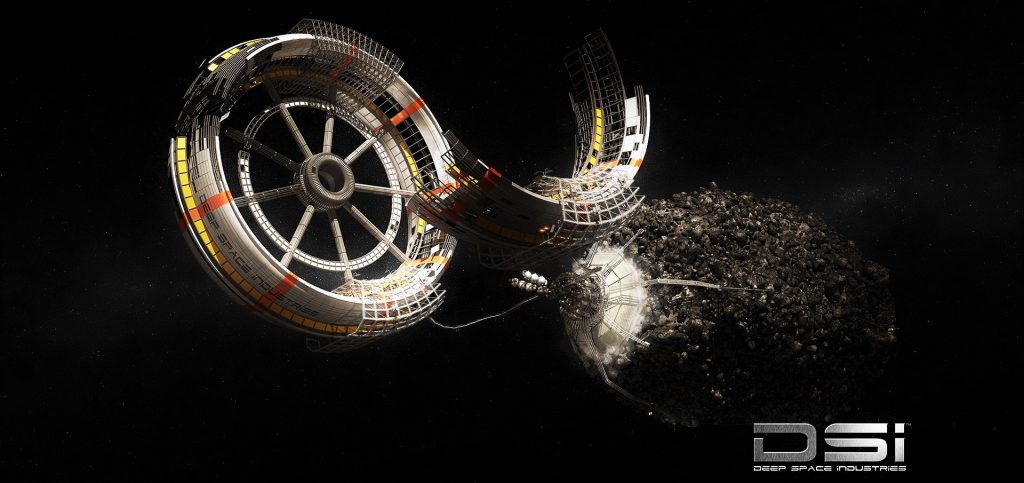
NewSpace, OldProblems
One could likely climb to the Moon with nothing more than a printed stack of all the studies, analyses, white papers, and hollow promises ever published on the utilization of space-based resources, an ode to the simultaneous promise and pitfalls the idea poses. As many have discovered, developing the ability to acquire, refine, and sell space resources is one of the most long-lead problems in existence. Put another way, funding a space exploration company on the promise of (or income from) space resources is a bit like paying for a solid-gold ladder by selling the fruit you needed it to reach.
For such an enterprise to make economical sense, one must either have access to ladders that are cheaper than their weight in gold or be able to sell the harvested fruit at breathtaking premiums. The point of this analogy is to illustrate just how challenging, expensive, and immature deep space exploration is relative to the possible resources currently within its grasp. There is also a bit of a circular aspect to space resource utilization: to sell the resources at the extreme premiums needed to sustain their existence, there must be some sort of established market for those resources – ready to purchase them the moment they’re available.
To build a market on space resources, one must already possess space resources to sell. This is the exact thing that government space agencies like NASA should develop, but entrenched and greedy corporate interests have effectively neutered NASA’s ability to develop technology that might transcend the need for giant, ultra-expensive, expendable rockets.
The need to secure funding via investors – investors expecting some sort of return – is the biggest roadblock to space resource utilization. Really, the only conceivable way to sustainably raise funding for space resource acquisition is to already have a functional and sustainable company as a base. SpaceX is a prime example: the company hopes to fund the development of a sustainable city on Mars with income from its launch business and Starlink internet constellation.
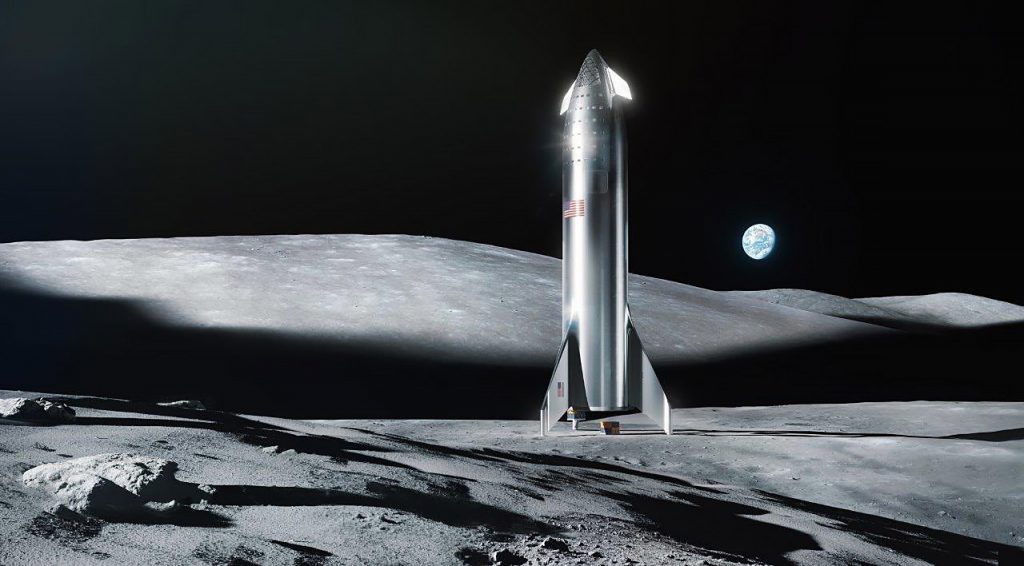
Ambitious plans, solid funding
Given all of the above, it’s extremely impressive that iSpace has managed to raise nearly $100M in just a few years and has done so without the involvement of one or several ultra-wealthy angel investors. Of course, it must still be acknowledged that the cost of iSpace’s longer-term ambitions can easily be measured in the tens of billions of dollars, but given an extremely lean operation and rapid success, $100M could plausibly fund at least one or two serious lunar landing attempts.
In the realm of flight tests, iSpace previously planned to perform a demonstration launch in 2020, in which a simplified lander would be used to orbit the Moon but not land. In the last year or so, the company has decided to entirely forgo that orbital test flight and instead plans to attempt a Moon landing on its first orbital flight, scheduled to launch on Falcon 9 no earlier than (NET) 2021. If successful, this inaugural landing would be followed as few as two years later (2023) by a lander and a lunar rover. Assuming a successful second landing, iSpace would move to ramp its production rates, launch cadence, and general ambitions, prospecting all over the Moon in 5-10+ separate lander missions.
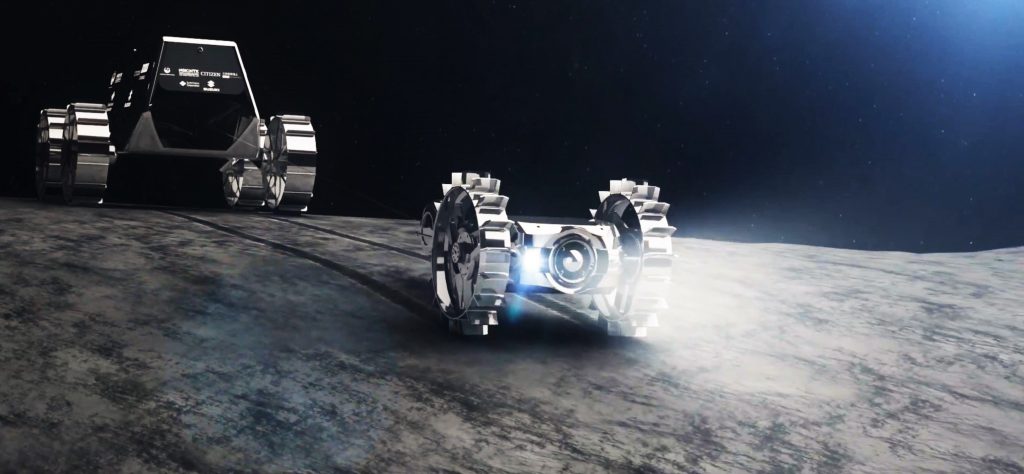
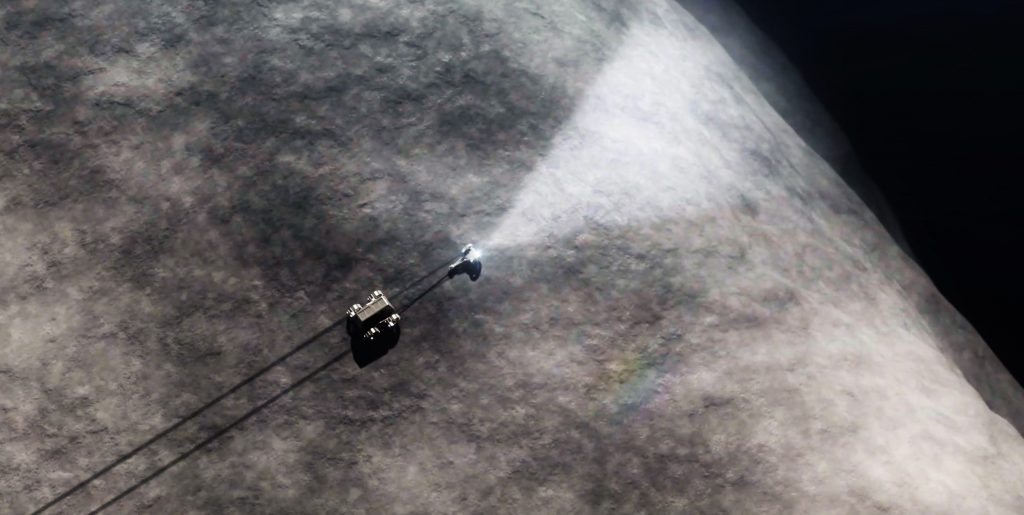
iSpace will still face the brick wall that all space resource companies eventually run into. Even if the company can successfully demonstrate a Moon landing and resource prospecting, it will need additional funding (and thus a commercially sustainable plan to sell investors on) to continue work and eventually, just maybe, get to a point where selling space-based resources can become a sustainable source of income.
Regardless of iSpace’s long-term business strategy, the early 2020s will be jam-packed with attempted commercial lunar landings, including Hakuto-R, Astrobotic, Intuitive Machines, and perhaps several other companies’ attempts. By all appearances, the exceptional mix of high performance and low cost offered by SpaceX’s Falcon 9 rocket will serve as a major enabler, allowing companies to put most of their funding into their landers instead of launch costs.
Check out Teslarati’s Marketplace! We offer Tesla accessories, including for the Tesla Cybertruck and Tesla Model 3.

News
Tesla Full Self-Driving v14.2 – Full Review, the Good and the Bad

Tesla rolled out Full Self-Driving version 14.2 yesterday to members of the Early Access Program (EAP). Expectations were high, and Tesla surely delivered.
With the rollout of Tesla FSD v14.2, there were major benchmarks for improvement from the v14.1 suite, which spanned across seven improvements. Our final experience with v14.1 was with v14.1.7, and to be honest, things were good, but it felt like there were a handful of regressions from previous iterations.
While there were improvements in brake stabbing and hesitation, we did experience a few small interventions related to navigation and just overall performance. It was nothing major; there were no critical takeovers that required any major publicity, as they were more or less subjective things that I was not particularly comfortable with. Other drivers might have been more relaxed.
With v14.2 hitting our cars yesterday, there were a handful of things we truly noticed in terms of improvement, most notably the lack of brake stabbing and hesitation, a major complaint with v14.1.x.
However, in a 62-minute drive that was fully recorded, there were a lot of positives, and only one true complaint, which was something we haven’t had issues with in the past.
The Good
Lack of Brake Stabbing and Hesitation
Perhaps the most notable and publicized issue with v14.1.x was the presence of brake stabbing and hesitation. Arriving at intersections was particularly nerve-racking on the previous version simply because of this. At four-way stops, the car would not be assertive enough to take its turn, especially when other vehicles at the same intersection would inch forward or start to move.
This was a major problem.
However, there were no instances of this yesterday on our lengthy drive. It was much more assertive when arriving at these types of scenarios, but was also more patient when FSD knew it was not the car’s turn to proceed.
Can report on v14.2 today there were ZERO instances of break stabbing or hesitation at intersections today
It was a significant improvement from v14.1.x
— TESLARATI (@Teslarati) November 21, 2025
This improvement was the most noticeable throughout the drive, along with fixes in overall smoothness.
Speed Profiles Seem to Be More Reasonable
There were a handful of FSD v14 users who felt as if the loss of a Max Speed setting was a negative. However, these complaints will, in our opinion, begin to subside, especially as things have seemed to be refined quite nicely with v14.2.
Freeway driving is where this is especially noticeable. If it’s traveling too slow, just switch to a faster profile. If it’s too fast, switch to a slower profile. However, the speeds seem to be much more defined with each Speed Profile, which is something that I really find to be a huge advantage. Previously, you could tell the difference in speeds, but not in driving styles. At times, Standard felt a lot like Hurry. Now, you can clearly tell the difference between the two.
It seems as if Tesla made a goal that drivers should be able to tell which Speed Profile is active if it was not shown on the screen. With v14.1.x, this was not necessarily something that could be done. With v14.2, if someone tested me on which Speed Profile was being used, I’m fairly certain I could pick each one.
Better Overall Operation
I felt, at times, especially with v14.1.7, there were some jerky movements. Nothing that was super alarming, but there were times when things just felt a little more finicky than others.
v14.2 feels much smoother overall, with really great decision-making, lane changes that feel second nature, and a great speed of travel. It was a very comfortable ride.
The Bad
Parking
It feels as if there was a slight regression in parking quality, as both times v14.2 pulled into parking spots, I would have felt compelled to adjust manually if I were staying at my destinations. For the sake of testing, at my first destination, I arrived, allowed the car to park, and then left. At the tail-end of testing, I walked inside the store that FSD v14.2 drove me to, so I had to adjust the parking manually.
This was pretty disappointing. Apart from parking at Superchargers, which is always flawless, parking performance is something that needs some attention. The release notes for v14.2. state that parking spot selection and parking quality will improve with future versions.
Any issues with parking on your end? 14.1.7 didn’t have this trouble with parking pic.twitter.com/JPLRO2obUj
— TESLARATI (@Teslarati) November 21, 2025
However, this was truly my only complaint about v14.2.
You can check out our full 62-minute ride-along below:
Elon Musk
SpaceX issues statement on Starship V3 Booster 18 anomaly
The incident unfolded during gas-system pressure testing at the company’s Massey facility in Starbase, Texas.

SpaceX has issued an initial statement about Starship Booster 18’s anomaly early Friday. The incident unfolded during gas-system pressure testing at the company’s Massey facility in Starbase, Texas.
SpaceX’s initial comment
As per SpaceX in a post on its official account on social media platform X, Booster 18 was undergoing gas system pressure tests when the anomaly happened. Despite the nature of the incident, the company emphasized that no propellant was loaded, no engines were installed, and personnel were kept at a safe distance from the booster, resulting in zero injuries.
“Booster 18 suffered an anomaly during gas system pressure testing that we were conducting in advance of structural proof testing. No propellant was on the vehicle, and engines were not yet installed. The teams need time to investigate before we are confident of the cause. No one was injured as we maintain a safe distance for personnel during this type of testing. The site remains clear and we are working plans to safely reenter the site,” SpaceX wrote in its post on X.
Incident and aftermath
Livestream footage from LabPadre showed Booster 18’s lower half crumpling around the liquid oxygen tank area at approximately 4:04 a.m. CT. Subsequent images posted by on-site observers revealed extensive deformation across the booster’s lower structure. Needless to say, spaceflight observers have noted that Booster 18 would likely be a complete loss due to its anomaly.
Booster 18 had rolled out only a day earlier and was one of the first vehicles in the Starship V3 program. The V3 series incorporates structural reinforcements and reliability upgrades intended to prepare Starship for rapid-reuse testing and eventual tower-catch operations. Elon Musk has been optimistic about Starship V3, previously noting on X that the spacecraft might be able to complete initial missions to Mars.
Investor's Corner
Tesla analyst maintains $500 PT, says FSD drives better than humans now
The team also met with Tesla leaders for more than an hour to discuss autonomy, chip development, and upcoming deployment plans.

Tesla (NASDAQ:TSLA) received fresh support from Piper Sandler this week after analysts toured the Fremont Factory and tested the company’s latest Full Self-Driving software. The firm reaffirmed its $500 price target, stating that FSD V14 delivered a notably smooth robotaxi demonstration and may already perform at levels comparable to, if not better than, average human drivers.
The team also met with Tesla leaders for more than an hour to discuss autonomy, chip development, and upcoming deployment plans.
Analysts highlight autonomy progress
During more than 75 minutes of focused discussions, analysts reportedly focused on FSD v14’s updates. Piper Sandler’s team pointed to meaningful strides in perception, object handling, and overall ride smoothness during the robotaxi demo.
The visit also included discussions on updates to Tesla’s in-house chip initiatives, its Optimus program, and the growth of the company’s battery storage business. Analysts noted that Tesla continues refining cost structures and capital expenditure expectations, which are key elements in future margin recovery, as noted in a Yahoo Finance report.
Analyst Alexander Potter noted that “we think FSD is a truly impressive product that is (probably) already better at driving than the average American.” This conclusion was strengthened by what he described as a “flawless robotaxi ride to the hotel.”
Street targets diverge on TSLA
While Piper Sandler stands by its $500 target, it is not the highest estimate on the Street. Wedbush, for one, has a $600 per share price target for TSLA stock.
Other institutions have also weighed in on TSLA stock as of late. HSBC reiterated a Reduce rating with a $131 target, citing a gap between earnings fundamentals and the company’s market value. By contrast, TD Cowen maintained a Buy rating and a $509 target, pointing to strong autonomous driving demonstrations in Austin and the pace of software-driven improvements.
Stifel analysts also lifted their price target for Tesla to $508 per share over the company’s ongoing robotaxi and FSD programs.








